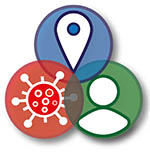
Deep dive into the UK energy sector
Electricity generating is one of the national critical infrastructure sectors, as it must maintain production irrespective of external circumstances (such as the COVID-19 pandemic).
The nuclear sector provides additional complications due to the safety critical nature of their operations (e.g. inability to shut reactors down at short notice). Hence, this industry has required a comprehensive risk assessment and management approach during the pandemic in order to avoid workplace outbreaks and minimise infection rates and sickness absence within their highly specialised workforce.
This integrated research study is being delivered by a multidisciplinary team of scientists from several teams/institutions as part of the PROTECT NCS project, and comprises four research tasks:
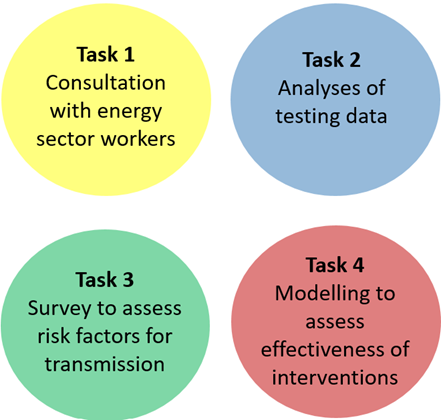
Task 1: Consultation with Energy Sector Workers
Consultations conducted between 25-28 July 2022 at 2 nuclear energy sites encompassed site-based staff and contractors. The following themes were used to prompt participant thinking and focus discussion:
- Control measures implemented to help reduce risk factors for COVID-19 transmission.
- Barriers & enablers to implementing COVID-19 mitigations.
- Impacts and unintended consequences to implementing COVID-19 mitigations.
- Lessons learned in case of future variants and other health emergencies.
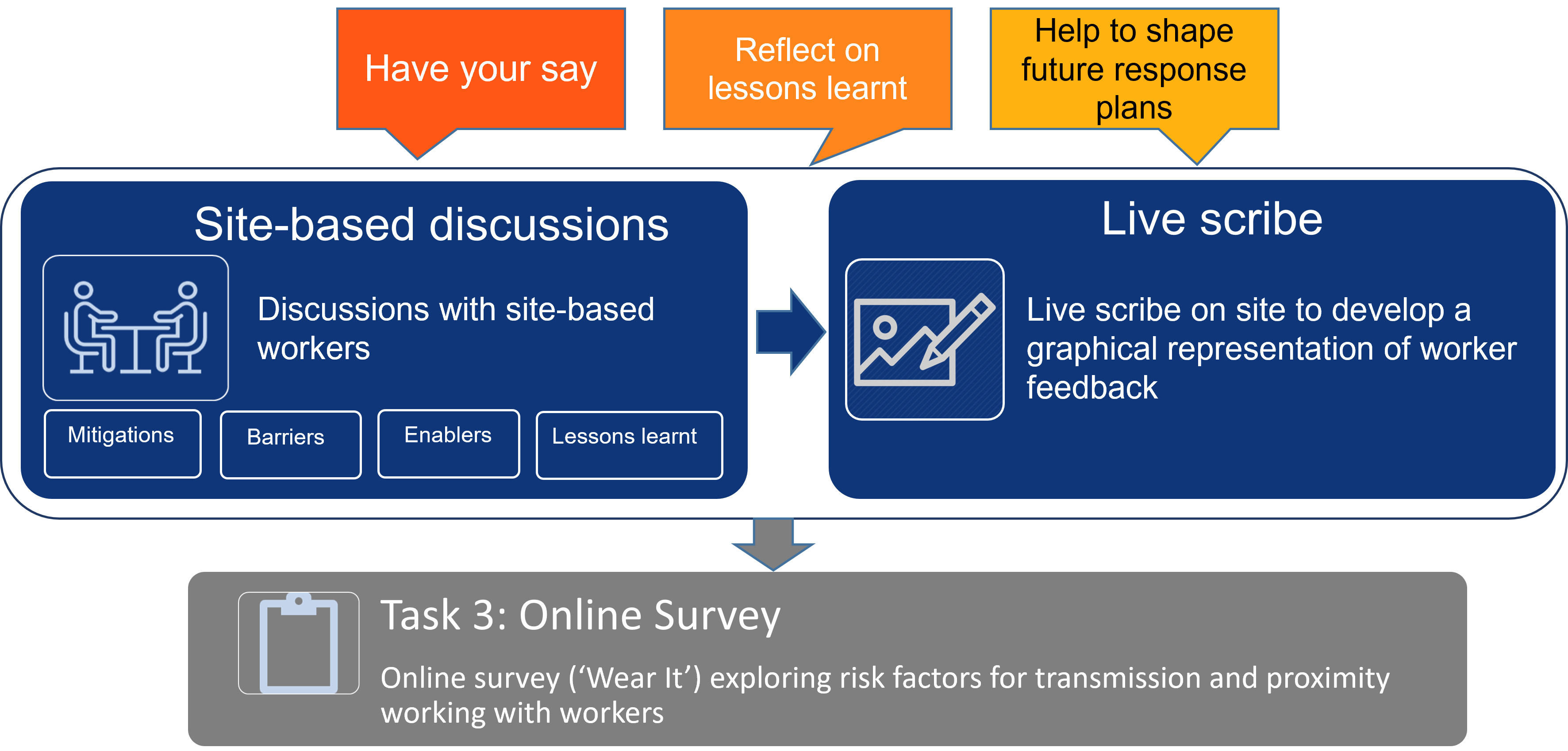
The Images below were created at each site by a live scribe, to prompt interaction and reflect the discussions with workers:
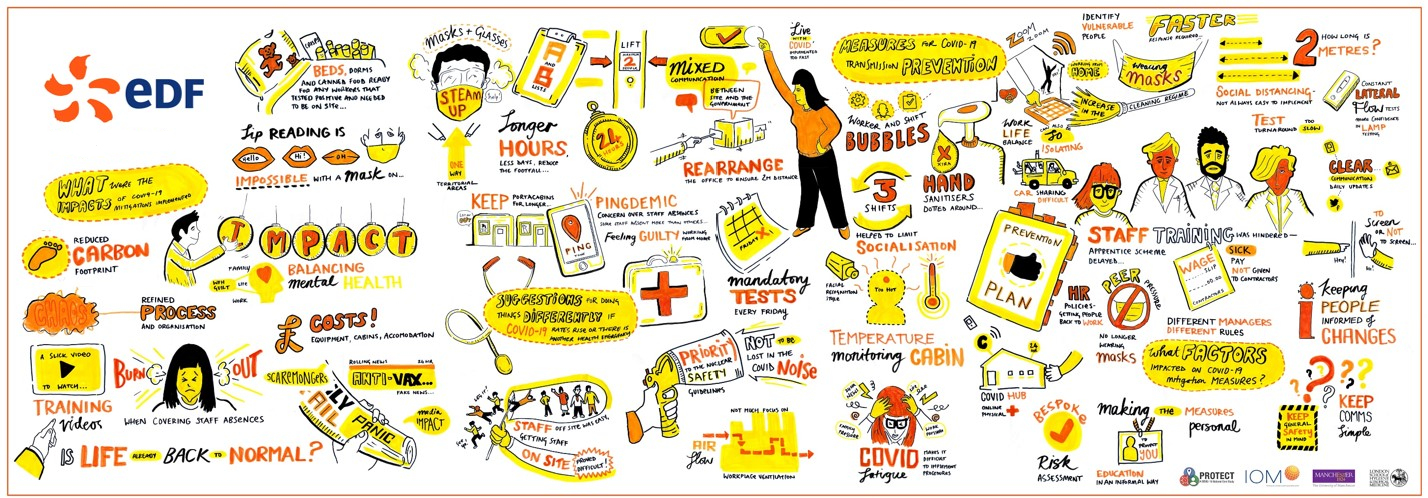
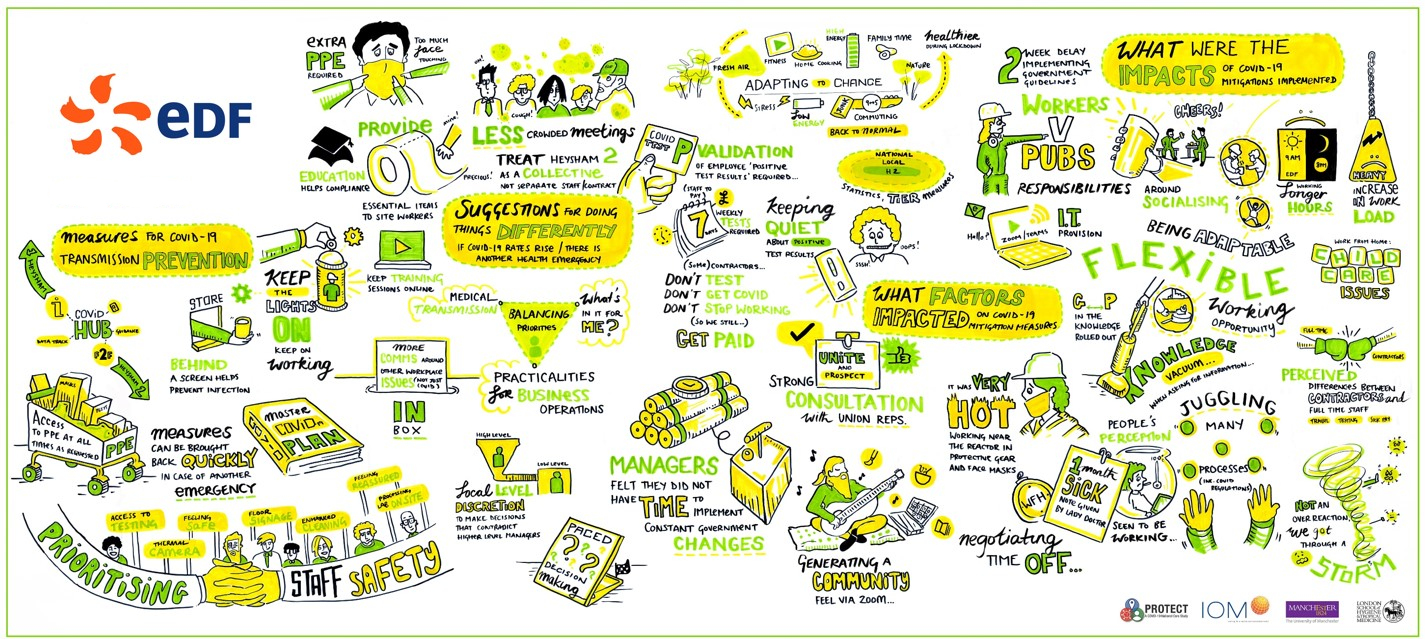
Access a larger version of these images produced by a visual scribe (PDF format)
Task 2: Analysis of testing data
The company introduced a comprehensive testing and test and trace programme. This included routine testing as well as testing based on symptoms and their own track and trace procedure.
This study is similar to the approach that we have taken in the COVID-OUT and Covid At Work Study, but provides more comprehensive and integrated information for this particular industry.
We carried out a comprehensive analyses of these data to determine differences in infection rates between types of job, location, geographic and demographic and other factors, whilst taking into account potential confounders, and to compare the infection rates with the workplace control measures implemented in different physical settings.
The apparent impact on workplace incidence of local incidence rates and the various intervention/risk management measures can also be addressed.
Task 3: Survey to assess risk factors for transmission
The PROTECT team carried out a survey of workers at two nuclear energy production sites using an online questionnaire.
The main purpose of the survey was to collect evidence on:
- workers’ views on the effectiveness of the control measures implemented by the employer to help reduce risk factors for COVID-19 transmission
- the patterns of contacts amongst workers on which simulation models can be run and effectiveness of past interventions evaluated
Workers’ views on the effectiveness of the control measures will be reported under Task 1 while self-reported contacts between co-workers will be used by Task 4.
Task 4: Modelling to assess effectiveness of interventions
Mathematical models can help assess the effectiveness of the control measures in the workplace by analysing the available testing data and simulating counterfactual scenarios.
The company testing data were analysed and compared with the LTLA testing data in the local community where most staff live using statistical models; this analysis has shown a general synchronicity in the two surveillance curves in the post-vaccination period.
Further preliminary analysis suggests that the pattern of infections seen in the company is as expected from the force of infection in the community, meaning that transmission within the company is limited and positive cases mostly reflect infections from outside.
More advanced agent-based modelling is looking at the pre-vaccination period to consider the effectiveness of testing.
Project Team
- Rebecca Canham, Institute of Occupational Medicine
- Yiqun Chen, Health and Safety Executive
- Emily Christopher, Institute of Occupational Medicine
- Katie Clabon, Institute of Occupational Medicine
- Anna Coleman, The University of Manchester
- Paulo Feroleto, Fero Studio Manchester
- Jean-Philippe Gorce, Health and Safety Executive
- Ian Hall, The University of Manchester
- Fiona Holland, The University of Manchester
- Paniz Hosseini, London School of Hygiene and Tropical Medicine (former)
- Sheena Johnson, The University of Manchester
- Neil Pearce, London School of Hygiene and Tropical Medicine
- Francesca Scarabel, University of Leeds
- Martie Van Tongeren, The University of Manchester
- Nick Warren, Health and Safety Executive
- Jingsi Xu, The University of Manchester
- Susan Young, Institute of Occupational Medicine
